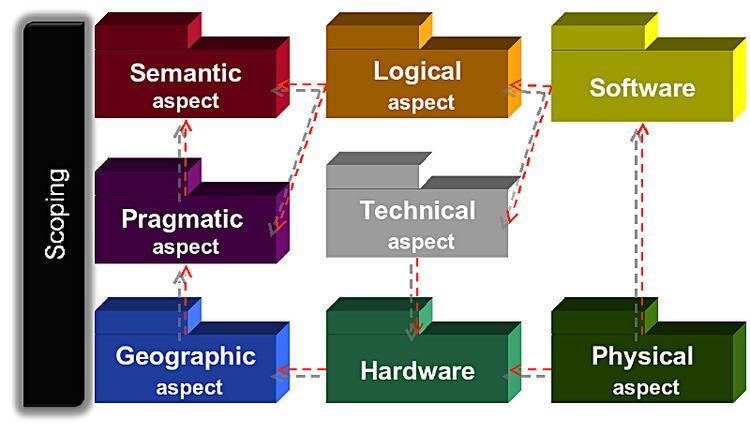 | ||
Praxeme is a methodology for enterprise architecture which provides a structured approach to the design and implementation of an enterprise information architecture.
Contents
Overview
Praxeme is an enterprise methodology which aims to embrace all aspects of the enterprise, from strategy to deployment. The name "Praxeme" is a contraction of "praxis" (action) and "semeion" (sense, meaning). The methodology contains design procedures for the information system and IT systems of the enterprise. It reconciles different modeling approaches. In particular, it proposes a semantic modeling technique which benefits from the object-oriented approach, to formalize the knowledge about the business fundamentals.
Praxeme follows in the footsteps of the methodological tradition:
Using the standard Unified Modeling Language, Praxeme's modeling techniques enable the “Enterprise System” to be rigorously defined. That is to say that the enterprise, in an effort of rationality, perceives itself to be a system. The notion of “Enterprise System” applies to enterprises and organizations, as well as any action system – organized and striving to achieve an aim. Praxeme has been used in contexts as varied as the insurance sector, drone or weaponry systems, energy and distribution.
History
Praxeme is initiated in 2003 as open method to respond to the need for enterprises to share a reference method in order to successfully manage their transformation projects. The foundations of the Praxeme method is initially enabled by the Aeronautics & Defense department of the SAGEM company. In 2004 the French mutual insurance company SMABTP supported the design procedures required to overhaul its information system in Service Oriented Architecture (SOA). The method was further supported by the French Army, the Caisses d'Allocations Familiales (Family Allowance offices) and the AXA Group.
The French General Directorate for State Modernization (DGME) in its document "General Repository for Interoperability", recommends using the Praxeme method for designing IT systems in French public services.
Founded in 2006, the Praxeme Institute is a non-for-profit association pursuant to the French law of July 1, 1901. It is a depository for the Praxeme corpus and guarantor of its open nature (cf. the statutes of the association ). The Praxeme Institute maintains regular contact with the university and research communities. Its interdisciplinary approach aims at making contributions from the field of science more readily usable in the enterprise.
Philosophy
Praxeme plays on the double meaning of the word “enterprise”: human organization and action. In both cases, they are complex objects. In order to apprehend this complexity and master action, the method distinguishes several formally identified and defined aspects. This is the Merise “levels of abstraction” or the Anglo-Saxon “separation of concerns” principle.
The Enterprise System Topology defines nine aspects, through which the documentation, decisions and projects of the enterprise are structured. As these aspects follow different rhythms and evolve differently, their separation enables us to reduce complexity and to optimize transformation efforts. For example, the technology life cycle is far shorter than that of “business” concepts.
Enterprise System Topology
The Enterprise System Topology which represents the methodological framework, distinguishes nine aspects:
The Enterprise System Topology articulates these aspects: it enables all the documentation to be sorted out and the rules of passage from one aspect to another to be defined. These rules are detailed in a metamodel. Praxeme proposes procedures for each of these aspects.
Project development
Praxeme is the result of an open initiative, based on the mutualization of investments. All its components are published, and may be freely accessed, under the Creative Commons license. Its works are ongoing, with the aim of covering the field of the methodology, delimited by the Pro3 (Pro Cube) schema:
The first dimension is structured as presented in the Enterprise System Topology above. The second includes elements of approaches at both an enterprise and project level. As well as modeling procedures, a test method, database design, forms... are part of the third dimension. In order to continue this work and to offer a complete method to the market, the Praxeme Institute is building partnerships with other organizations, seeking to federate available energies (CESAMES and the Ecole Polytechnique, SEMIC.eu, Société française de terminologie, etc.).
